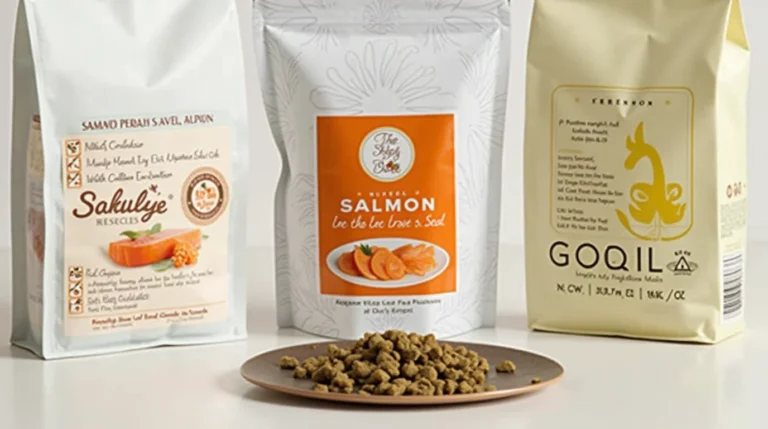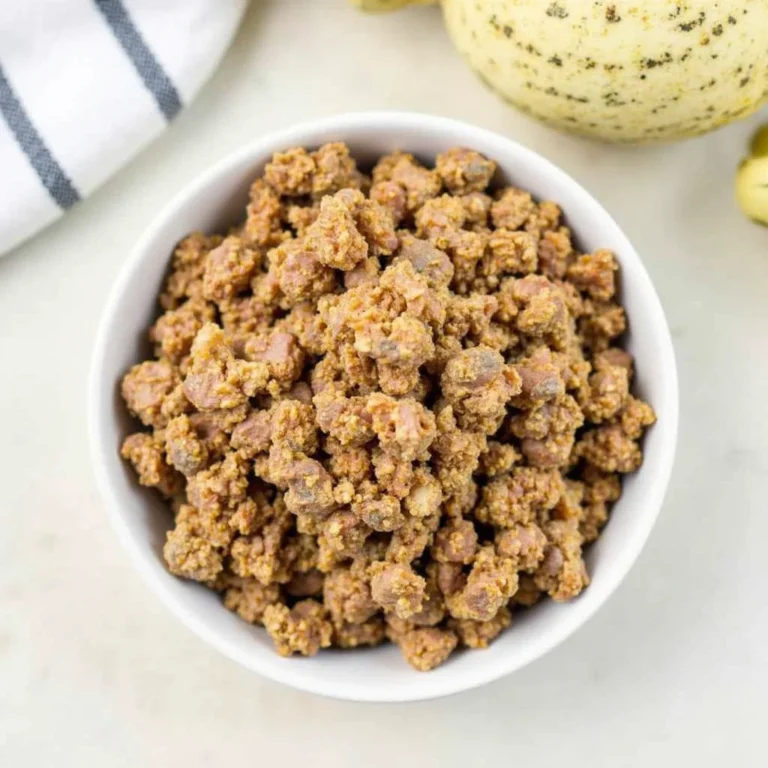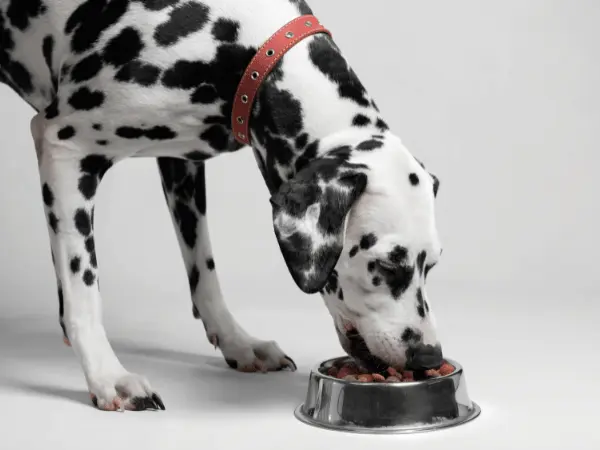Pet owners are becoming more conscious of their dogs’ diets, seeking nutritious, high-quality, and minimally processed food options. One trend gaining momentum is frozen dog food—a diet that preserves essential nutrients while eliminating artificial preservatives found in kibble.
But is frozen dog food the right choice for your pet? In this guide, we’ll explore the benefits, drawbacks, best brands, and how frozen dog food compares to other feeding options.
What Is Frozen Dog Food?
Frozen dog food is raw or lightly cooked pet food stored at freezing temperatures to preserve nutrients. Unlike traditional kibble or canned dog food, it contains minimal processing, whole-food ingredients, and no artificial preservatives.
Frozen dog food is available in different formats, including:
- Raw frozen patties or nuggets – Uncooked, biologically appropriate diets for dogs.
- Lightly cooked frozen meals – Cooked at low temperatures to kill bacteria while preserving nutrients.
- Freeze-dried raw food – Frozen raw food that has been moisture-removed for shelf stability.
Key Benefits of Frozen Dog Food
1. Higher Nutritional Value
Frozen dog food retains more vitamins, minerals, and amino acids compared to highly processed kibble. Freezing preserves the natural integrity of raw meat, fruits, and vegetables.
2. Fewer Artificial Additives
Unlike dry kibble, frozen dog food does not require artificial preservatives, colorings, or fillers. This reduces the chances of allergic reactions and digestive issues.
3. Supports a Healthier Coat and Skin
Many frozen dog food brands include high-quality proteins, omega-3 fatty acids, and fresh vegetables, which contribute to a shiny coat, healthy skin, and reduced inflammation.
4. Improved Digestion
A dog’s digestive system is designed to process raw or lightly cooked foods efficiently. Frozen diets often contain natural enzymes and probiotics that aid digestion and improve stool quality.
5. Better Dental Health
Chewing on frozen raw meats or bones helps reduce tartar buildup and promotes strong teeth and gums.
6. Reduced Risk of Obesity
Frozen dog food contains higher protein levels and fewer carbohydrates, helping maintain a lean body weight and muscle mass.
Disadvantages of Frozen Dog Food
1. Requires Freezer Storage
Frozen dog food needs to be stored properly to prevent spoilage. If you have limited freezer space, this might be a challenge.
2. Higher Cost Compared to Kibble
Because it contains premium, whole-food ingredients, frozen dog food is often more expensive than traditional kibble. However, many pet owners find the investment worth it for their dog’s long-term health.
3. Handling and Preparation
- Needs thawing before feeding.
- Can carry bacteria like Salmonella if not handled properly (especially raw frozen diets).
- Requires careful portioning to avoid waste.
4. Not Always Convenient for Travel
If you’re traveling with your dog, carrying frozen meals requires a cooler or refrigeration, making it less convenient than kibble.
Best Frozen Dog Food Brands
If you’re considering switching your dog to a frozen diet, here are some of the top-rated brands known for high-quality ingredients and balanced nutrition:
1. Stella & Chewy’s Frozen Raw Patties
- Made with grass-fed meats and organic vegetables
- Includes probiotics and natural enzymes for digestion
- Grain-free and gluten-free
2. Primal Raw Frozen Nuggets
- Human-grade meats and organic produce
- No synthetic vitamins or fillers
- Supports joint health with natural glucosamine
3. Instinct Raw Frozen Bites
- Lightly processed to retain maximum nutrients
- Includes antioxidants for immune support
- Grain-free formula
4. Smallbatch Dog Frozen Food
- Sustainably sourced meats and organic vegetables
- No antibiotics or hormones
- Minimal processing for maximum nutrition
How Frozen Dog Food Compares to Other Diets
| Feature | Frozen Dog Food | Kibble | Canned Dog Food | Fresh Cooked Dog Food |
|---|---|---|---|---|
| Processing Level | Minimal | Highly processed | Moderate | Lightly cooked |
| Nutrient Retention | High | Moderate | Moderate | High |
| Storage Needs | Freezer | Shelf-stable | Refrigeration after opening | Refrigeration |
| Preservatives & Additives | None | Often contains additives | Some additives | None |
| Cost | $$$ | $ | $$ | $$$ |
While kibble is the most affordable and convenient, frozen dog food offers superior nutrition and mimics a natural canine diet more closely.
How to Transition Your Dog to Frozen Dog Food
If your dog has been eating kibble, it’s important to gradually transition to frozen dog food to prevent digestive upset.
Step-by-Step Transition Guide:
- Days 1-3: Mix 25% frozen food with 75% of your dog’s current food.
- Days 4-6: Increase frozen food to 50%.
- Days 7-9: Increase to 75% frozen food.
- Day 10+: Feed 100% frozen food if your dog is adjusting well.
Monitor your dog for digestive changes, allergies, or refusal to eat and adjust accordingly.
FAQs About Frozen Dog Food
1. Is frozen dog food safe?
Yes, as long as it’s handled and stored properly. Always thaw food in the refrigerator and clean bowls after feeding.
2. Can puppies eat frozen dog food?
Yes, but choose a puppy-formulated frozen food that meets their specific growth needs.
3. Does frozen dog food need to be cooked?
No. If feeding raw frozen food, serve it as is. If it’s lightly cooked frozen food, simply thaw and serve.
4. How long does frozen dog food last?
Unopened frozen food can last 6-12 months in the freezer. Once thawed, it should be used within 3-5 days.
5. Can I mix frozen food with kibble?
Yes, but ensure proper digestion by feeding kibble and frozen food at different meals (e.g., frozen in the morning, kibble at night).
Conclusion
Frozen dog food is an excellent choice for pet owners seeking a high-quality, minimally processed diet for their furry friends. While it requires proper handling and storage, its nutritional benefits, digestive support, and lack of artificial additives make it a top choice for dogs of all ages.
If you’re considering switching to frozen dog food, consult your veterinarian to find the best formula for your pet’s unique dietary needs.







